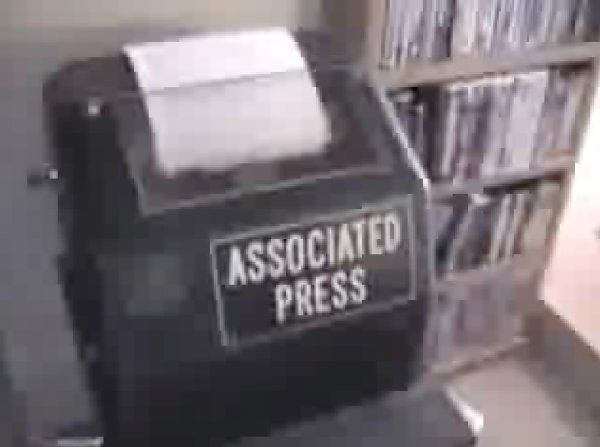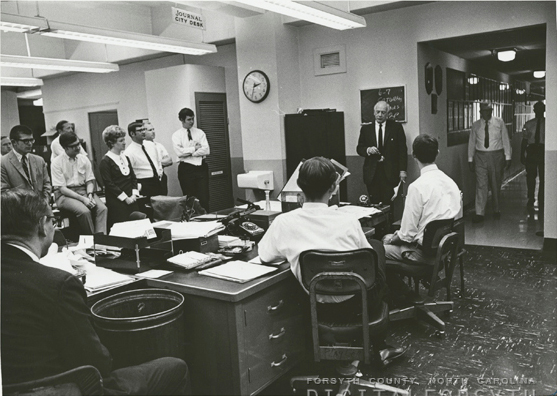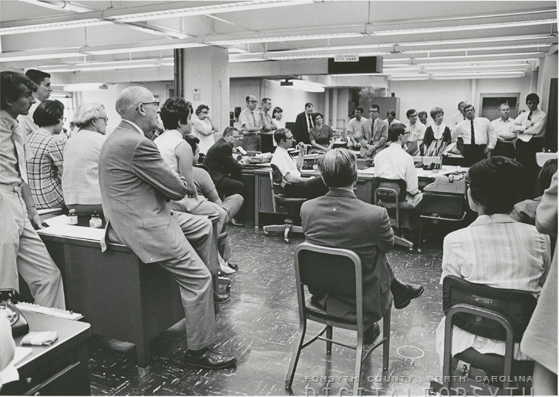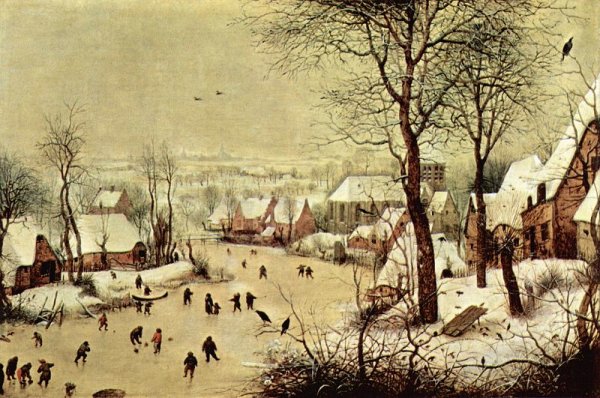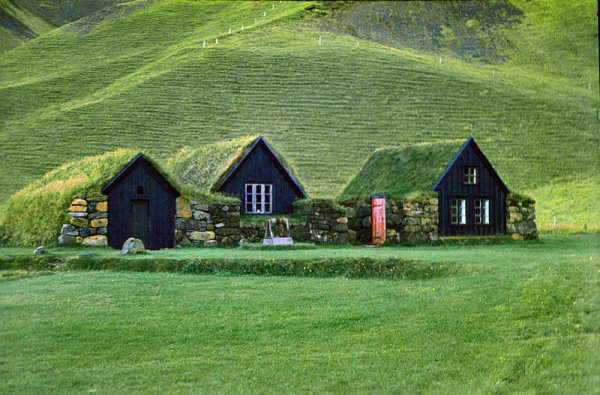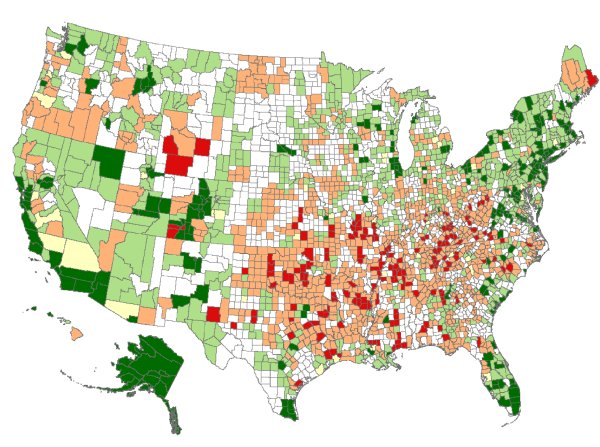My previous post about the death of Fred Fragler, who hired me for my first job, got me all sentimental about analog communications technology. I mentioned the Associated Press Teletype machines and how it was the job of a newspaper copy boy to look after them. The Winston-Salem Journal had about, oh, eight of them. They made a lot of noise and were kept in their own room adjoining the newsroom.
Here’s a Google video that shows one running, and you can hear how it sounds.
The old Associated Press teletype network used a nationwide network of telephone lines leased from AT&T. Since this technology used telephone lines, it follows that its signal was something that could be carried over the telephone — sound. Sound, of course, can also be carried by radio. Ham radio operators still use this type of signal for communication. It’s radio teletype, which hams call RTTY. It, too, is sound. It sounds like this on the radio. Hams now use computers and computer sound cards to generate and decode this sound.
I’m still working on setting up my radio room here in the new house, and I don’t yet have a radio teletype system set up. When I was in San Francisco, though, I had confirmed (meaning the other side of the communication later sent an acknowledgement) radio teletype contacts with other RTTY operators New Zealand, Japan, the Galapagos, Spain, and Hawaii. Radio teletype actually is a very efficient mode of radio communications, almost as efficient as Morse code.
I’m amused by young’uns these days with their iPhones. “I can call New Zealand with my iPhone,” they might say. Sure they can. But the signal from their iPhone can carry at most for a few miles, then a corporate communication system picks up the data and hauls it to New Zealand. Whereas, in a radio teletype message from San Francisco to New Zealand, there is nothing between the two radios but the ionosphere.

